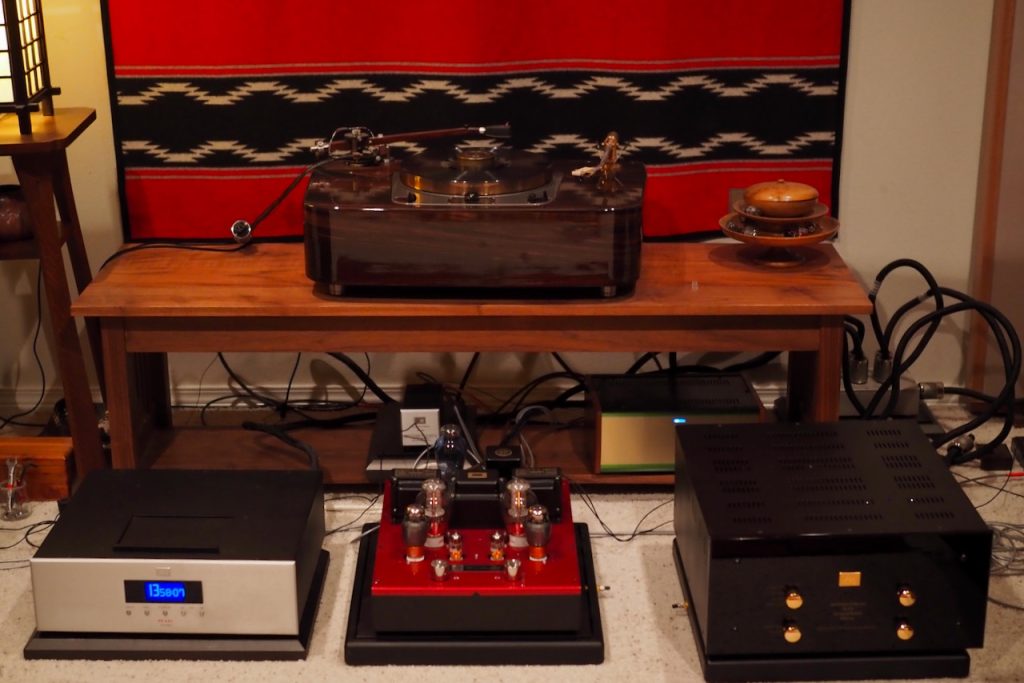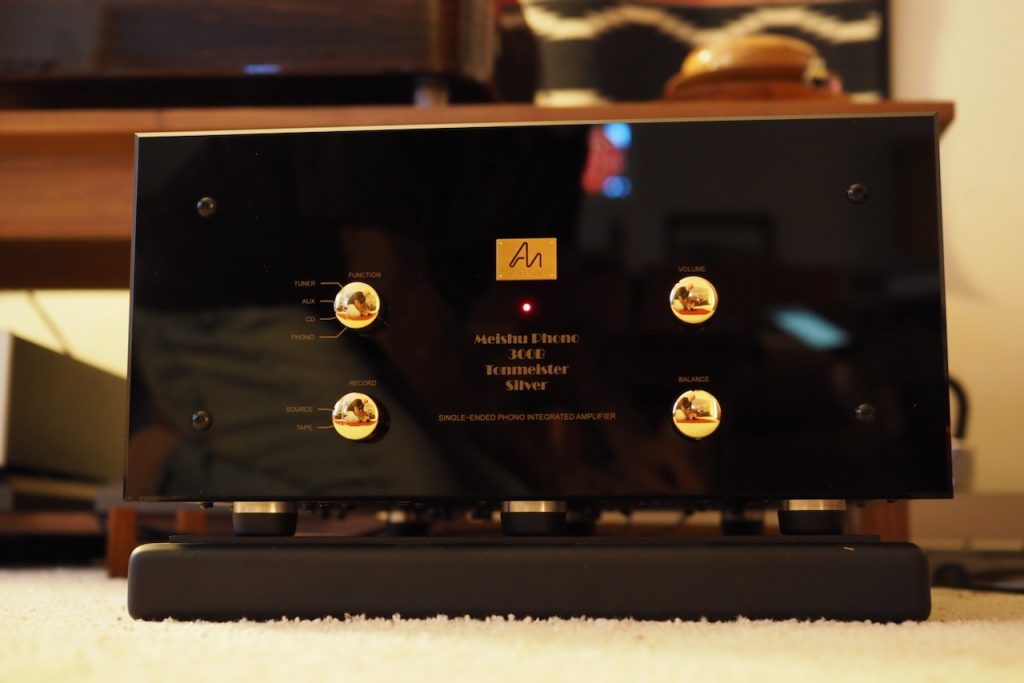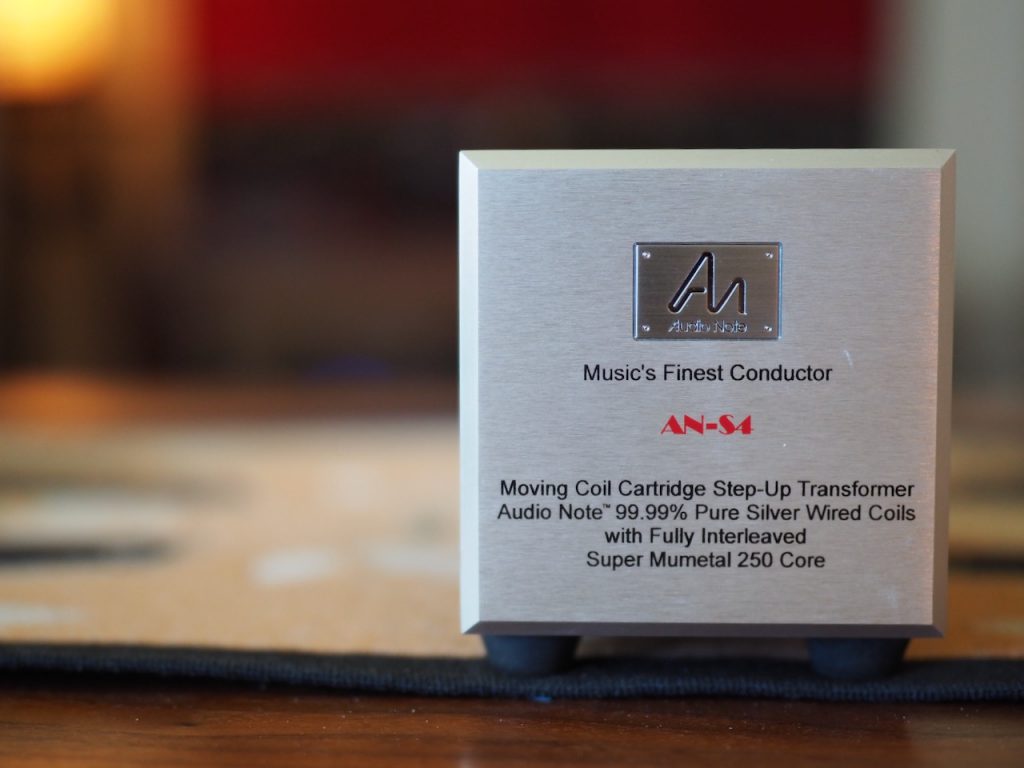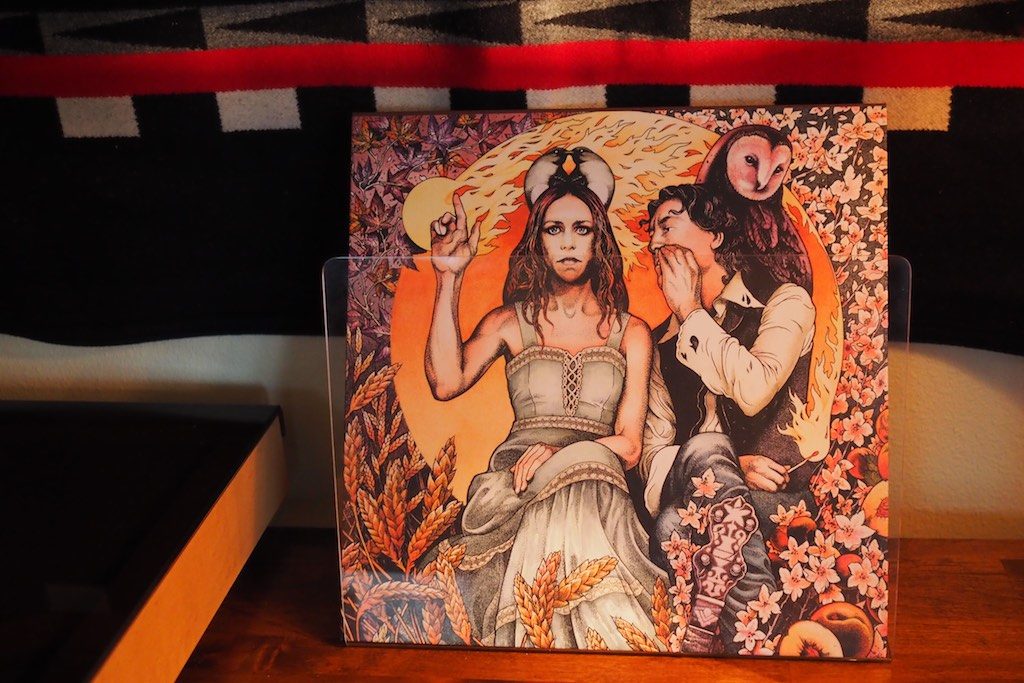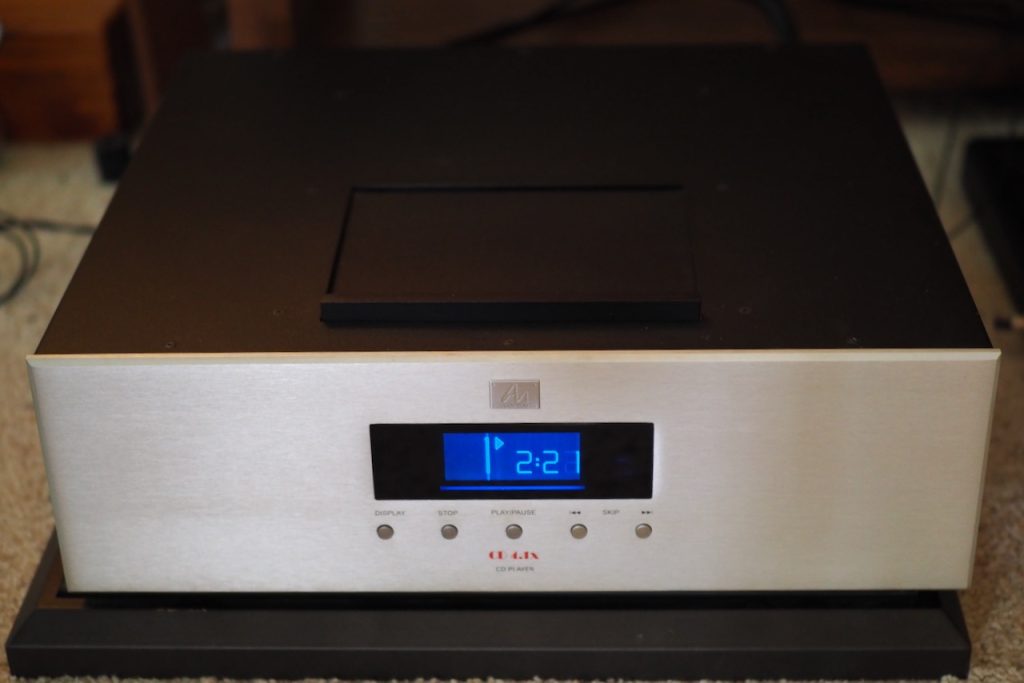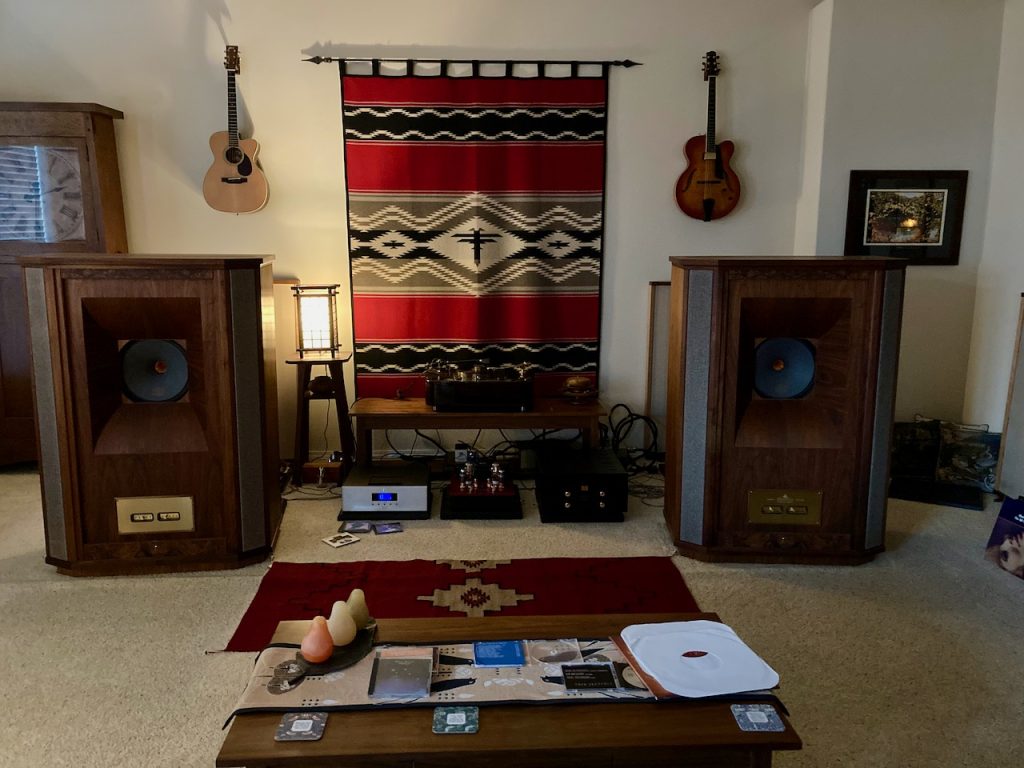It's raining steadily outside of my window right now. The weather has gone from blazing hot for multiple weeks this Summer, with skies randomly filled with smoke from forest fires, to cooler temperatures with cloudy skies dispensing rain across our parched countryside.
The rain of October is the start of the hi-fi 'weather' season for me. It's time to light a fire in the fire place, to get the Edison lamps glowing, to sip some tasty beverages, to cook a nice dinner over a flaming grill, and to listen to great music. Primal. Soul satisfying.
Most of you who stop by regularly know that I've been having a ball - for a while now - exploring music from the different eras of the recording arts: the acoustic (1877-1925), the electric (1925-1945), the magnetic (1945-1975), and the digital (1975 to now).
I've been in a state of audio grace of late, as I've got a system here right now that just 'clicks' to deliver stunning musical performances.
Swapping the Audio Note (UK) Meishu Phono Silver Tonmeister 300B single-ended-triode (SET) integrated amplifier back and forth with the Triode Lab 45 EVO SET integrated amplifier has been a real lesson about how much single-ended-amplifiers have evolved over the last decade or so.
They are both just stunning, and don't let their low number of watts fool you, with sensitive loudspeakers like the Westminsters they really are awe inspiring to hear.
The 45 EVO is remarkably synergistic with my Tannoy Westminster Royal SE loudspeakers and their Duelund CAST crossovers.
The 45 EVO is 2 muscular watts of purity, musicality, and emotional engagement. It also sounds utterly natural and 'real' in the best musical sense of that word.
The Meishu is the Cabernet Sauvignon to the 45 EVO's Pinot Noir. The Meishu is a little more full-bodied, a little darker, is also awesomely musical and engaging, and much more powerful at 8 watts. I never run out of power with the mighty Meishu on the West's!
Certain combinations of equipment just 'click' and deliver the musical goods regardless of what you throw at them from our rich recorded music canon.
You can't gain back with amplification what's lost on the front end, so having good front end sources is really important.
The Audio Note (UK) sources I have here have been truly illuminating on what is possible for getting recorded music from any era or medium to sound stunning and naturally musical.
For vinyl I've been listening to the Audio Note (UK) Io I MC phono cartridge, AN-S4 step-up transformer, and AN-V silver interconnects (HERE) on my CTC Garrard 301 turntable.
By the way, Ray at Classic Turntable Company just built a CTC Classic Garrard 301 for Steven Tyler (Aerosmith). You can see photos of Steven's new CTC 301 on Ray's Classic Turntable Company Facebook page.
I think that's cool. You're going to love your CTC 301, Steven, enjoy!
The outgoing signal either goes through the excellent phono stage in the Meishu, or if I'm listening to the 45 EVO, then through the Leben RS-30 EQ phono preamp.
Both those phono stages share similar design concepts, and serve the music remarkably well.

Triode Lab 45 EVO SET integrated amplifier (left), Audio Note (UK) CD (back middle), and Leben RS-30EQ (right).
Classic valve phono stages tend to fall into two basic design genres: those like the Marantz Model 7 that use negative feedback (NFB) to achieve RIAA phono equalization; and those like the Harman Kardon Citation IV that use no NFB, and use capacitors and resistors (CR) to achieve RIAA equalization.
So, by analogy, if the Marantz Model 7 phono stage was a 'push-pull amplifier using negative feedback' in its design, then the Harman Kardon Citation IV phono stage would be like a 'single-ended-triode amplifier' with no negative feedback used in its design.
Both the phono stage in the Meishu and the Leben RS-30EQ phono stage use no NFB, and employ CR RIAA equalization. They get the music right.
The result is that the best recordings from the stereo period of the magnetic era of recording sound stunning in the audiophile sense of soundstage, imaging, and so forth, and they also get the emotional feel, and the 'real' sound of the music, just right for my tastes.
Earlier I was listening to Gillian Welch and David Rawlings, The Harrow & The Harvest, and they were solidly in my living room, full of life, color, presence, and nuanced dynamics. The emotional impact of Gillian's dark themes came through in spades, were kind of unsettling, yet their darkly gorgeous music swept me away in ecstasy.
Monaural recordings from latter part of the electric era, and the early part of the magnetic era of recording, are also stunning. Later electric era 78s are impressive, and can match or even exceed the level of performance of monaural records from the early part of the magnetic era.
One of the things that has been a real listening breakthrough for me over the last few years has been the ability to go back in recorded time and listen to early recordings from the acoustic and electric eras of recording, and hear them played back in rather stunning fashion over the Audio Note (UK) CD 2.1x/II and 4.1x CD players.
The overall voicing of these two CD players is very analogue like, and for those who have been used to a diet of mostly vinyl listening (like me), coming across CD players that can play back CDs in a fashion that offers a comparable listening experience to vinyl has provided for a remarkable expansion of my listening library.
Great acoustic and electric era recordings that don't normally circulate out of the music lover circles into the audiophile realm become immediately accessible, and irresistibly musical.
I'll tell you what, very few people in the world have heard what those 78 records are really capable of in a high-fidelity audio system, and there is a renaissance of releasing those early performances on CDs as transfers from the original 78 discs.
They're good. Really good. There's lots of them that only the music cognoscenti have heard of, so every listening session is a new adventure in music.
Those discs become accessible - and eminently enjoyable - with CD players like the 4.1x and 2.1x/II. Their presence has dramatically expanded my listening adventures into new realms of music.
The 4.1x and 2.1x/II also work their magic on CDs from later recording eras too, like Martin Taylor's 1994 The Spirit of Django, Last Train to Hauteville, that my friend David brought over for me to hear.
I missed that one first time around, but you can still find copies on LP and CD from the Linn label. The CD I have is from the "P3 Music" "the guitar label", and it is excellent. If you don't have this album I encourage you to get it.
I haven't been traveling internationally for a while due to all the turmoil in the world, but I can put on The Spirit of Django, Last Train to Hauteville and be transported to Paris in the 1920s. That's what it feels like to me.
I'm in the Les Deux Magots, or the Café de Flore, and at the next table over is Hemingway, drinking a dry martini with James Joyce, and there's Scott and Zelda Fitzgerald at the table next to them with some absinthe cocktails, with Gertrude Stein holding court in the corner, taking it all in.
That's what recorded music can feel like when your audio system is getting the music right, it transports you in time to the musical event, and you become part of the experience.
A Happy Fall to you all! Its the official start of my hi-fi season.
Turn on the stereo, get out your favorite beverage, dim the lights, pull up a chair, and join me in enjoying listening to the music with the falling rain in the background. Its good for the soul.
As always, thanks for stopping by, and may the tone be with you!





